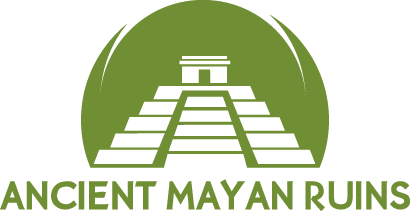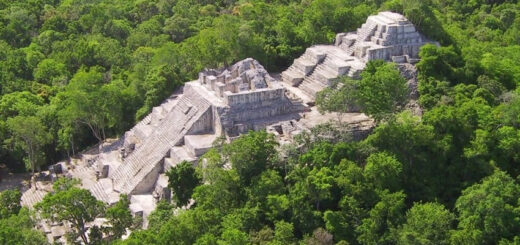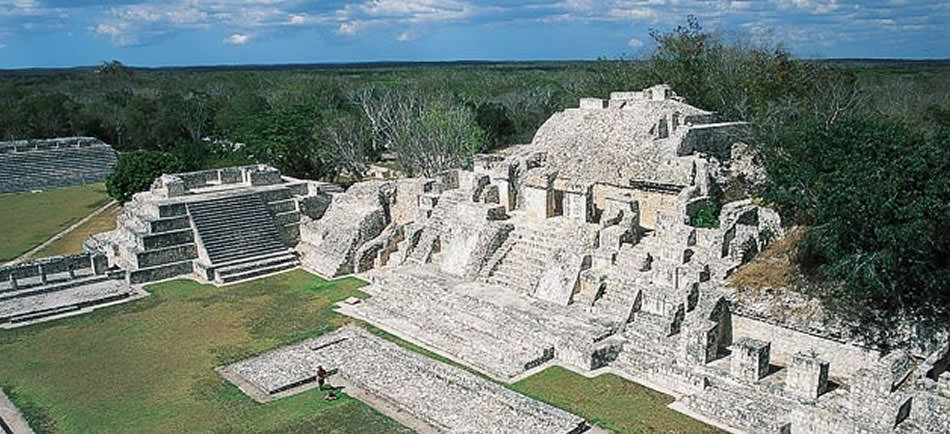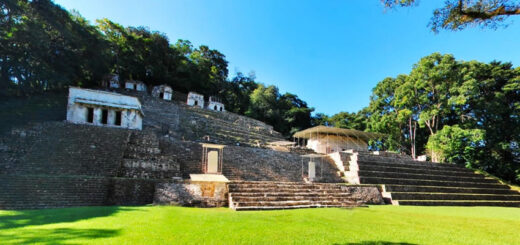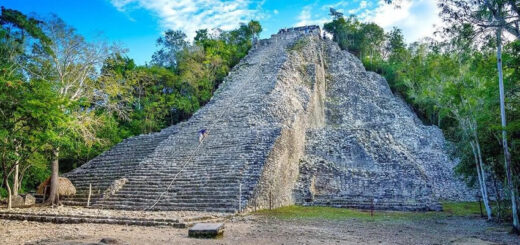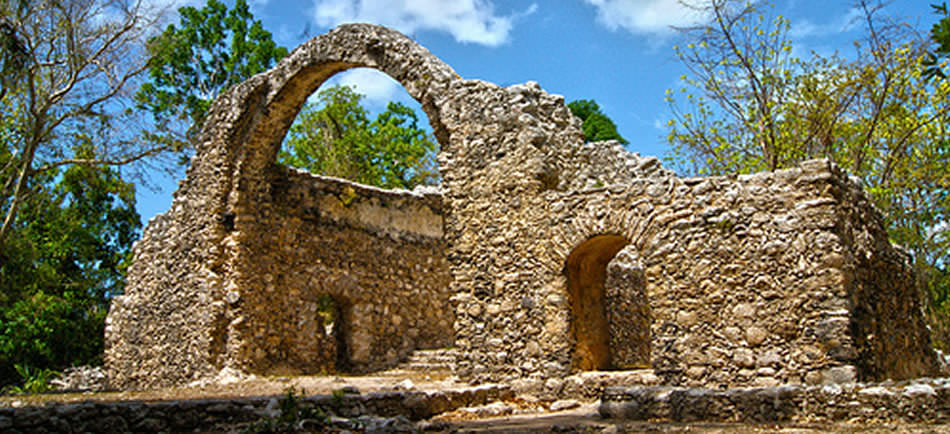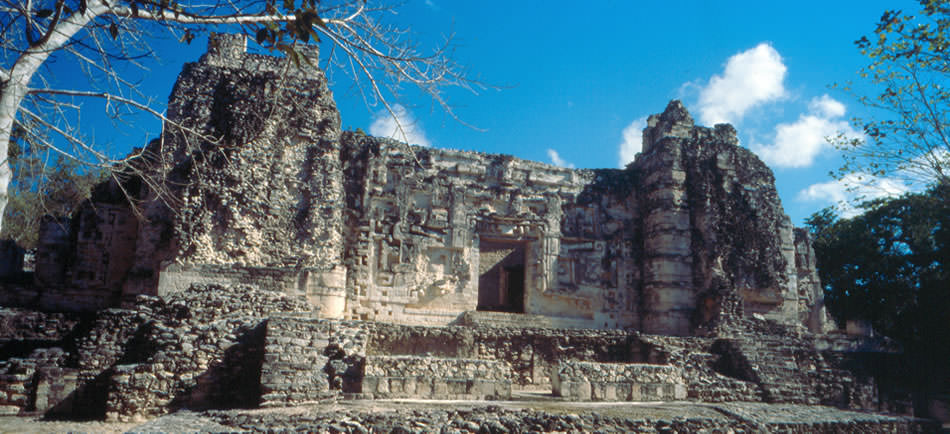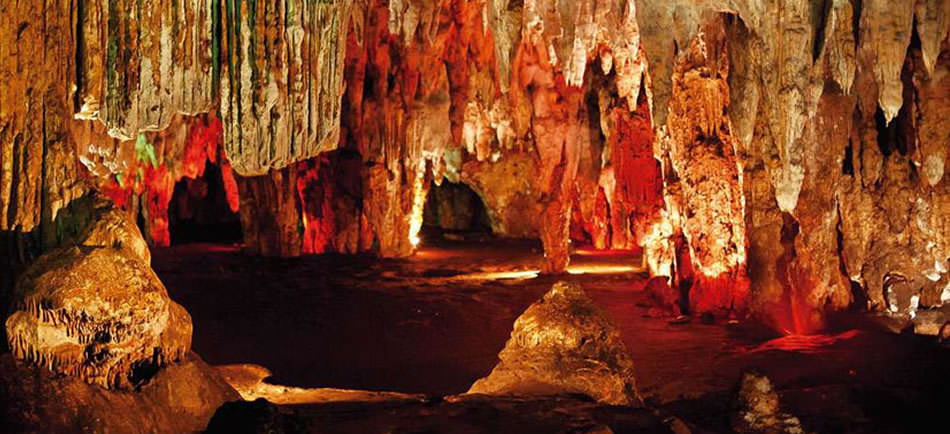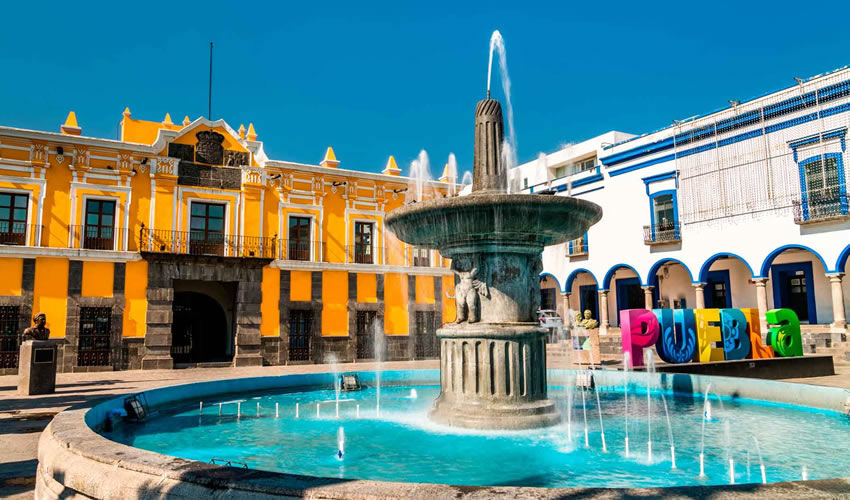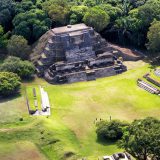
Dzibilchaltún
Dzibilchaltún is a Maya archaeological site in the Mexican state of Yucatán, approximately 10 miles north of state capital Mérida.
In the view of modern researchers, the ancient builders of Dzibilchaltún may have chosen the site of the city to be as close as possible to the coastal salt-producing region (some 22 km away), while still being located on a reasonably fertile and habitable terrain.
The region between Dzibilchaltún and the sea coast is less suitable for human habitation, being either mangrove swamps or bare rock.
Overview
The site has been continuously occupied for thousands of years, although it has expanded and contracted from mid-sized city to small town more than once in its long history.
It is just about 20 minutes from Mérida and the famous sea that supposedly was the site of impact of the meteorite that killed the dinosaurs.
Dzibilchaltun, a modern Mayan name meaning “writing on flat stones”.
Restoration continues at Dzibilchaltun with over 35 square kilometers investigated by international archaeologists. 8,000 structures have been identified but only a small portion excavated. Due to the long history of this particular site and the various influences from both Maya and Spanish communities, INAH has added an on-site museum on some of the great architectural features of the buildings and artifacts.
History
Dzibilchaltun Ruins are located near the colonial city of Merida, Yucatan. Dzibilchaltun was a large settlement and still occupied when the Spanish arrived during the 1500s. Archaeologists estimate there were as many as 200,000 inhabitants and 8,400 buildings during its history with artifacts dating back to the middle of the classic period (700 – 800 A.D.) Highlights are the large plaza, sacbe trails, the Temple of the Dolls, and the Open Chapel, an unusual amphitheater shaped structure.
Dzibilchaltun doesn’t have huge pyramids like Chichen Itza or Uxmal, but it does have its own unique features that make it a worthwhile site to visit. It was once a wealthy port and center of Mayan coastal trade with a peak population of about 200,000.
The population declined as Chichen Itza rose to power. The Maya lived here from 300 B.C. to the time of the Spanish invasions.
The Spanish continued to build in the city once they arrived and visitors can see the Franciscan chapel that lies in the middle of the Mayan ruins.
Architecture
Temple of the Dolls
Templo de las Siete Muñecas, the Temple of the Dolls, is an impressive building on a pyramid base with one short tower on its roof and a stelae in front of the building.
The temple was discovered by archaeologists in the 1950s under the ruins of a larger pyramid which was constructed on top of The Temple of the Dolls.
Building temples on top of temples was a common practice with the Maya. The dolls were found in the buried temple, but are now housed in the museum to protect and preserve these architectural features. Though the dolls have been moved, the ingenuity of this building remains. The Temple of the Dolls and its temple doorways were constructed in a specific and deliberate direction that confirms the Maya understanding of the solar system.
During the Spring and Autumn equinox, the sun’s rays pass through the doorways of the temples. Since corn remained a major part of the Maya diet, this event had great significance to the Maya as it represented the beginning and end of harvest season honoring Yum Kax, the Maya god of corn.
The site is opened at 5:30 A.M. on those two days so visitors can view the phenomenon.
The temple is connected to the rest of the site by a sacbe, or “white road,” so-called because they were originally coated with white limestone, built over stone-and-rubble fill.
The Open Chapel
A sacbe (roadway) leading from the Temple of the Seven Dolls connects to the central plaza and an unusual arched structure called the Open Chapel. When the Spanish arrived in the 16th Century, they dismantled some of the buildings in this settlement and used the stone to construct their own buildings, including this 16th Century Franciscan church that now lies in ruins on the site. This is the only Mayan ruin we know of that has Spanish buildings co-existing with Mayan structures.
Cenote Xlakah
Cenote Xlakah is a beautiful freshwater pool located to the side of the main plaza. It was the city’s freshwater source and perhaps the main reason the Maya chose this location to build their settlement. Water from Cenote Xlakah would have been perfect for residential drinking water and irrigation of their fields.
Under the surface, Cenote Xlakah reaches depths of 44 meters (144 feet). According to the plaque near the water’s edge, Xlakah means “old town” in Maya. The cenote was first explored from 1957-59 when thousands of pottery shards and urns were found in the water along with wood, stone and bone artifacts. The earthenware dates to the Late Classic Periods of 600-1000 A.D.
Visitors to Dzibilchaltun can swim in the cenote during their tour. Bring your bathing suit so you can take advantage of the cool fresh water.
Dzibilchaltun Museum
The air conditioned museum at Dzibilchaltun is full of interesting artifacts of both Mayan and Spanish origin. Carved stone tablets, stelae, and the original carved dolls are displayed alongside Maya hupiles, old textile machinery, maps, Spanish armor, swords and other weapons. The museum is located by the entrance to the ruins site and is definitely worth seeing during your stay. The air conditioning can be a relief during a hot day.
Surroundings
The other major feature of Dzibilchaltún is its cenote, Cenote Xlakah, located around the center of the city’s ruins. It is thought that the availability of this source of clean drinking water influenced the builders’ choice of the location. Archaeological findings retrieved from the cenote by divers indicate that it was the center of a religious cult. These days the cenote is used as a swimming hole by local residents and tourists year round.
Dzibilchaltún also contains the ruin of a 16th-century Spanish church built at the site after the conquest.
The Dzibilchaltun archeological site also includes a visitor center with maps, restrooms and gift shops. The renovated museum housing Mayan artifacts located at the site has re-opened.
How to get there?
Dzibilchaltun is only 9 miles from Merida.
Merida taxi drivers would be happy to take you to this site or you can hop on public transportation to the site.
From Mérida by taxi will take about 20 minutes and will cost $3-$10.
Combi vans (collectivos) can be found on Calle 69 between 62 and 64 in San Juan Park, Merida.
These vans go directly to Dzibilchaltun.
Entrance fee
The entrance fee is $139 pesos non-Mexicans and $107 pesos Mexican citizens.
Entry fees include access to the museum.
The site of Dzibilchaltún has various services to make the visitor comfortable: a restaurant, the gift shop, information booth, medical services, telephone, handicapped facilities, restrooms, and parking.
Open from 8:00 to 17:00
